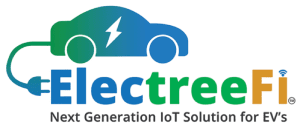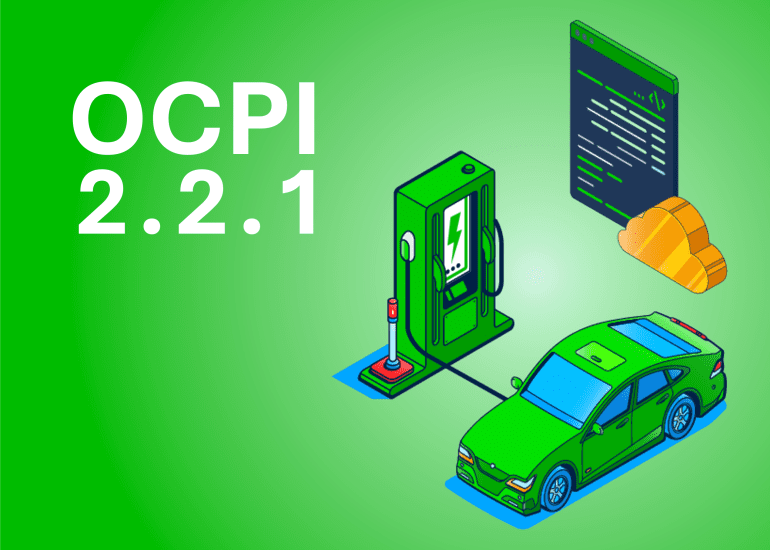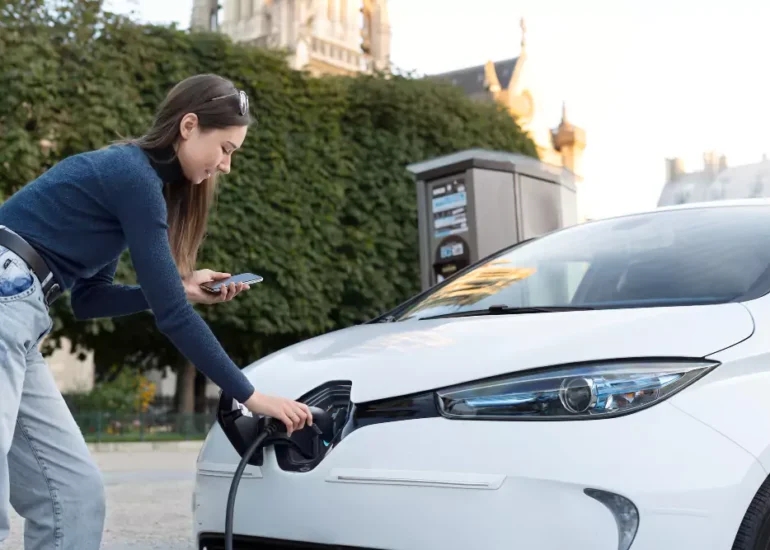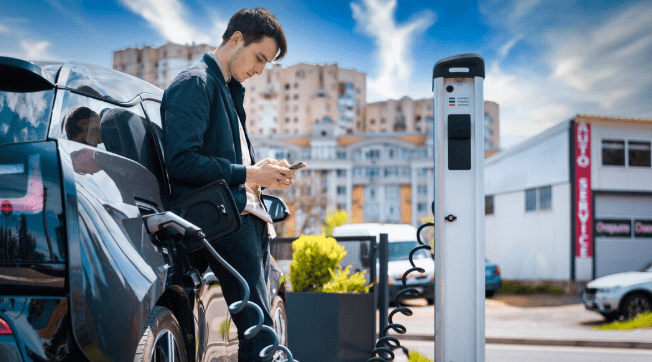The electric vehicle (EV) revolution is not just on the horizon; it’s here, and it’s accelerating at an unprecedented pace is not just on the horizon; it’s here, and it’s accelerating at an unprecedented pace. As more drivers make the switch from gasoline-powered vehicles to electric ones, the demand for efficient, reliable, and accessible EV charging infrastructure has surged. But it’s not just about keeping up with demand—it’s about innovating and advancing the technology that powers these stations.
In this blog, we’ll explore the cutting-edge trends and innovations that are defining the future of EV charging. From ultra-fast charging stations to the integration of renewable energy, these advancements are set to transform how we power our vehicles. We’ll also highlight how ElectreeFi is at the forefront of this transformation, offering solutions that not only meet but exceed the expectations of today’s EV drivers and businesses.
Table of Contents
The Evolution of Ultra-Fast EV Charging
The Need for Speed in EV Charging
As electric vehicles become more mainstream, the demand for faster and more efficient charging solutions has skyrocketed. Traditional Level 2 chargers, which typically provide around 7-22 kW of power, can take several hours to fully charge an EV. For many drivers, this is simply too long, especially when traveling long distances.
Enter ultra-fast charging, also known as DC fast charging. These chargers deliver power levels up to 350 kW, drastically reducing charging times. For example, a vehicle compatible with ultra-fast charging can receive an 80% charge in just 15-20 minutes, making it possible to top up the battery during a short break.
The Infrastructure Challenge
While ultra-fast charging is a game-changer for EV owners, it presents significant challenges for infrastructure development. High-power chargers require substantial investments in grid upgrades, including more robust electrical connections and transformers. Additionally, these chargers must be strategically placed along highways and in urban areas to maximize their utility.
Despite these challenges, the deployment of ultra-fast ev charging stations is accelerating, driven by government incentives and private sector investments. Companies like Tesla, with their Supercharger network, have set the standard, but other players are quickly catching up.
The Impact on EV Adoption
Ultra-fast charging is not just about convenience; it’s also about accelerating the adoption of electric vehicles. By addressing range anxiety and reducing the time spent at charging stations, ultra-fast chargers make EVs more appealing to a broader audience. This, in turn, supports the broader goals of reducing greenhouse gas emissions and transitioning to a low-carbon economy.
Smart EV Charging: The Future of Energy Management
What is Smart EV Charging?
Smart EV charging refers to the integration of advanced technologies that allow chargers to communicate with the grid, manage energy usage, and optimize charging times based on various factors such as electricity rates and grid demand. This technology is crucial in the context of the growing number of EVs on the road and the need to manage energy consumption more efficiently.
How Smart Charging Works?
Smart chargers are equipped with software that enables them to monitor electricity prices in real-time. They can schedule charging sessions during off-peak hours when rates are lower, saving users money. Moreover, smart charging systems can adjust the charging speed based on grid demand, helping to prevent overloading and reduce the risk of blackouts.
Another key feature of smart charging is the ability to integrate with renewable energy sources. For example, a smart charger can prioritize using solar power generated by rooftop panels, further reducing the environmental impact of EVs.
Benefits of Smart Charging
- Cost Savings: By optimizing charging times, smart chargers reduce energy costs for consumers and businesses alike.
- Grid Stability: Smart charging helps balance the load on the grid, preventing disruptions and enhancing the reliability of the electricity supply.
- Environmental Impact: Integrating renewable energy into the charging process reduces the carbon footprint associated with EVs.
Wireless EV Charging: Convenience Without Compromise
The Concept of Wireless Charging
Wireless EV charging is one of the most exciting developments in the industry. This technology allows vehicles to charge without the need for cables or physical connectors. Instead, energy is transferred through electromagnetic fields between a charging pad on the ground and a receiver on the vehicle.
While wireless charging is still in its early stages, it has the potential to revolutionize the way we think about EV charging. Imagine driving into your garage or parking lot, and your car begins charging automatically—no plugs, no hassle.
How Wireless Charging Works?
Wireless charging operates on the principle of electromagnetic induction. A charging pad, which can be embedded in the ground, generates a magnetic field. When a compatible EV parks over the pad, the magnetic field induces an electric current in a coil within the vehicle. This current is then used to charge the battery.
Challenges and Opportunities
The main challenges with wireless charging include efficiency and cost. Current wireless systems are less efficient than wired chargers, meaning that some energy is lost during the transfer process. Additionally, the wireless charging station installation and setup cost is higher than traditional charging stations.
However, the convenience offered by wireless charging could outweigh these challenges, particularly in public spaces where ease of use is critical. As the technology improves and costs decrease, wireless charging could become a standard feature in many new vehicles and public charging stations.
Integrating EV Charging with Renewable Energy
The Push for Sustainability
As the world grapples with climate change, the integration of renewable energy into EV charging infrastructure is becoming increasingly important. Solar-powered EV chargers are a prime example of how renewable energy can be harnessed to reduce the environmental impact of electric vehicles.
Solar-Powered Charging Stations
Solar-powered charging stations are equipped with photovoltaic (PV) panels that convert sunlight into electricity. This energy is then used to charge EVs, either directly or stored in batteries for later use. These stations are particularly effective in sunny regions, where they can operate independently of the grid.
Wind-Powered EV Charging
While less common than solar, wind-powered EV charging is another option being explored. In this setup, wind turbines generate electricity that can be used to power charging stations. This is particularly useful in areas with consistent wind patterns, such as coastal regions.
Hybrid Systems
In many cases, the most effective approach is a hybrid system that combines solar, wind, and grid power. This ensures a reliable energy supply even when weather conditions are not ideal for renewable generation. By integrating multiple energy sources, hybrid systems offer the best of both worlds: sustainability and reliability.
EV Charging Infrastructure: The Road Ahead
The Importance of Infrastructure Development
The expansion of EV charging infrastructure is critical to the continued growth of the electric vehicle market. Without widespread and accessible charging stations, the adoption of EVs could stall. This is why governments, businesses, and utilities are investing heavily in expanding charging networks.
Public vs. Private Charging Stations
One of the key considerations in infrastructure development is the balance between public and private charging stations. Public EV chargers, often located in parking lots, highways, and urban centers, are essential for long-distance travel and for drivers who do not have access to home charging.
Private chargers, on the other hand, are typically installed at homes or workplaces and offer the convenience of charging where the vehicle is parked for long periods. Both types of chargers are necessary to support the growing number of EVs on the road.
While home charging currently meets most of the demand, public charging points are crucial for wider EV adoption, especially in urban areas. In 2022, there were 2.7 million public charging points globally, with more than 900,000 installed that year—a 55% increase over 2021. China led the growth, particularly in fast charging, with over 760,000 fast chargers deployed, addressing the need for rapid EV expansion.
Innovations in Infrastructure
Recent innovations in infrastructure include the development of modular EV charging stations that can be easily expanded as demand grows. Additionally, the integration of smart technology into these stations allows for better energy management and more efficient use of resources.
ElectreeFi: Leading the Charge in EV Charging Solutions
ElectreeFi is at the forefront of the EV charging revolution, offering a comprehensive suite of solutions that address the challenges and opportunities discussed in this blog. Here’s how ElectreeFi stands out in the competitive landscape:
Comprehensive Solution Suite:
ElectreeFi provides a complete ecosystem of EV charging solutions, from hardware to software, ensuring seamless integration and operation across various platforms. Our solutions are designed to meet the needs of both private and public ev charging networks, offering flexibility and scalability.
Advanced Analytics and Monitoring:
With ElectreeFi’s intelligent EV charging management platform, businesses can monitor charging patterns, optimize energy consumption, and reduce operational costs. Our systems also feature predictive maintenance capabilities, minimizing downtime and ensuring the highest efficiency.
Sustainability Focus:
ElectreeFi is committed to sustainability. Our chargers can be integrated with renewable energy sources, such as solar and wind, helping businesses and consumers reduce their carbon footprint. Additionally, our smart charging solutions optimize energy use, further enhancing their environmental benefits.
User-Centric Design:
Our EV chargers are designed with the user in mind. They feature intuitive interfaces, mobile app integration, and multiple payment options, making them accessible and easy to use for everyone. Whether at home or on the go, ElectreeFi’s solutions provide a seamless charging experience.
Advanced Protocols of EV Charging
Here are some cutting-edge protocols shaping the future of EV charging:
OCPI (Open Charge Point Interface):
- Enables seamless interoperability between different charging networks.
- Allows you to charge your EV at any station regardless of the provider.
- Powered by ISO 15118.
- Simplifies the charging process by automatically initiating billing and optimizing charging parameters.
- Eliminates the need for separate apps or memberships.
OADR (Open Automated Demand Response):
- Empower utilities to optimize grid management.
- Enables chargers to communicate with the grid and adjust charging based on real-time electricity rates and demand.
- Contributes to a more sustainable and efficient energy grid.
These advancements are paving the way for a future of EV charging that is not only efficient but also incredibly user-friendly.
Conclusion
The future of EV charging is bright, driven by innovations that are making electric vehicles more accessible, convenient, and sustainable. As the industry continues to evolve, staying informed about these trends is crucial for consumers, businesses, and policymakers alike.
ElectreeFi is proud to be a part of this journey, offering cutting-edge EV charging solutions that not only meet the demands of today but also anticipate the needs of tomorrow. Whether you’re looking to install an ultra-fast charger, integrate renewable energy, or simply learn more about the future of EVs, ElectreeFi has the expertise and technology to help you succeed.
Explore our cutting-edge EV Charging Solutions and stay ahead of the curve. Contact us today to learn more about how we can help you power the future.





